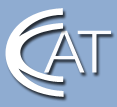Explore high-paying careers in clean, high-tech Connecticut manufacturing.

Externship Summary
RCNGM Leader: Peter Poulos, Engineering Technology Professor
Manchester Community College
Externship: UCONN Photonics Research Center
Lessons Learned:
The most useful component of my externship was having the opportunity to do research and analysis in the study of light and more specifically addressing the question "What is a Photon?" This analysis required a review of the mathematics and physics used in the analysis of wave phenomena. The understanding gained was instrumental in the development of the lesson plan for the classroom.
The most challenging component of the activity was getting up to speed and thinking the problem through as a physicist and not as an electrical engineer. It became clear to me that the physicist’s approach and view of the world is very different from the engineers. As an engineer I approached my investigation as a "black box" with some predefined input and measurable output. What was necessary was to find out what is going on inside the box. This was not so easy.
Impact on Student Learning
The students were engaged and asked meaningful questions. I initially developed the mathematics of waveform interaction - the result of two cosine waves interfering with each other. The classic examples of this are waves in a pond or sound waves. Concepts such as constructive interference and destructive interference are built on these observable phenomena and the mathematics supports it. Then I posed the question, "Does light interfere with light?" Putting forth the principle that light is a wave, how is it that two radio stations that are transmitting do not interfere with each other or do they? What happens when you pass a red light beam through a yellow light beam? Do the two colors emerge or is there a change in color? And most importantly, is the mathematics of wave from interaction giving us wrong information.
In order to fully understand and appreciate the lesson, it was necessary to discuss the role of detectors and the relationship between the detection process and reality. Simply stated, what we see may not necessarily be what is occurring in the physical real world. At the end of the day, I believe I generated a great deal of interest in optics, photonics and the importance of doing research.
Student impact is difficult to measure but based on the response, questions and enthusiasm, I believe we have a group of future engineers that have a greater appreciation for optics, photonics and the future role of these enabling technologies in our world. I am optimistic that some of these students will enroll in future courses in optics and photonics.
Externship Sustainability:
I have been offered a one- year gratis research professorship by Dr. William Stwalley, head of the University of Connecticut Physics Department which will provide me an opportunity to continue my work. Moreover, as a direct result of this collaboration, UConn and MCC submitted a joint grant application to the NSF for development of a visual, interactive e-learning curriculum in optics.





